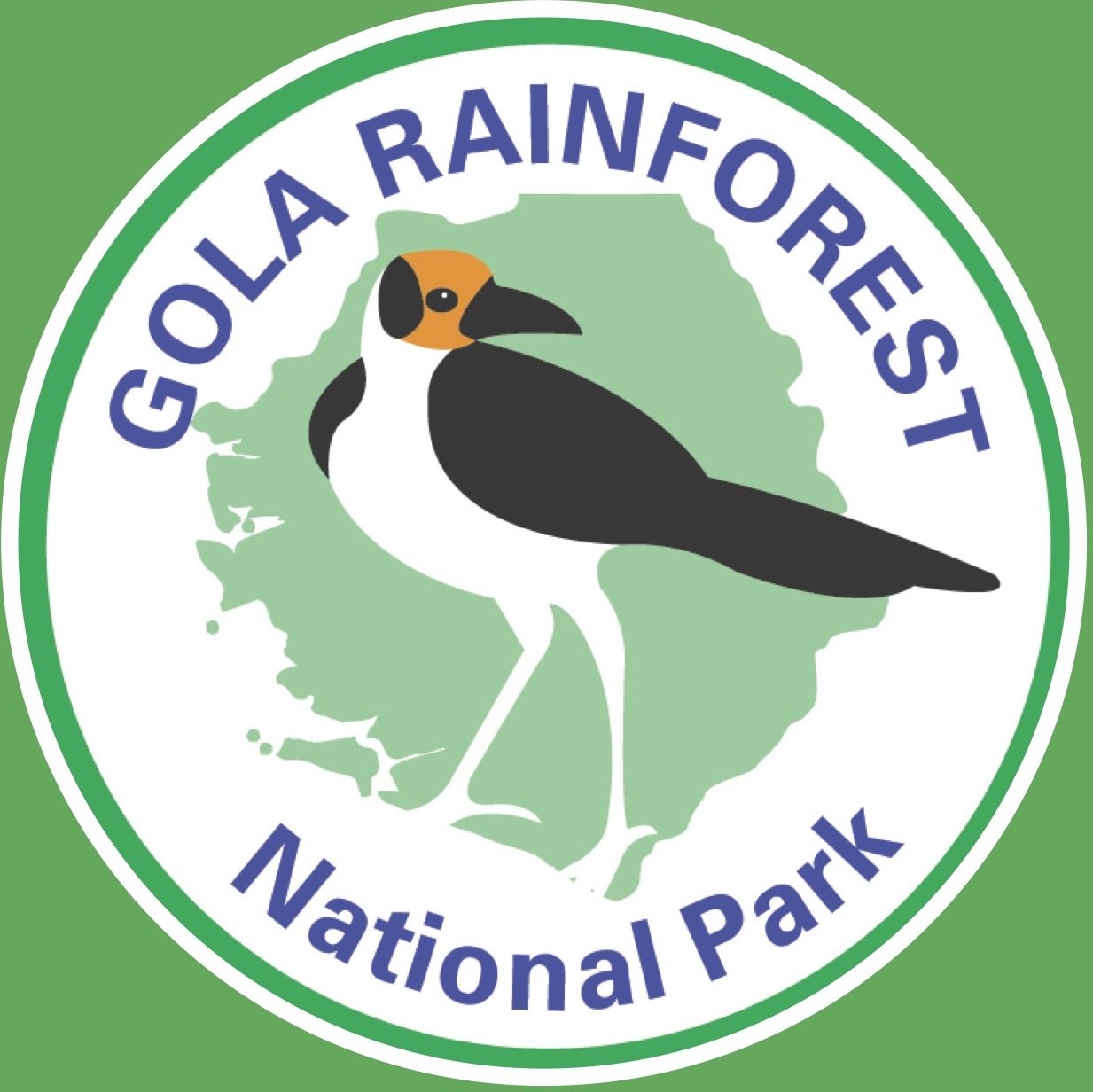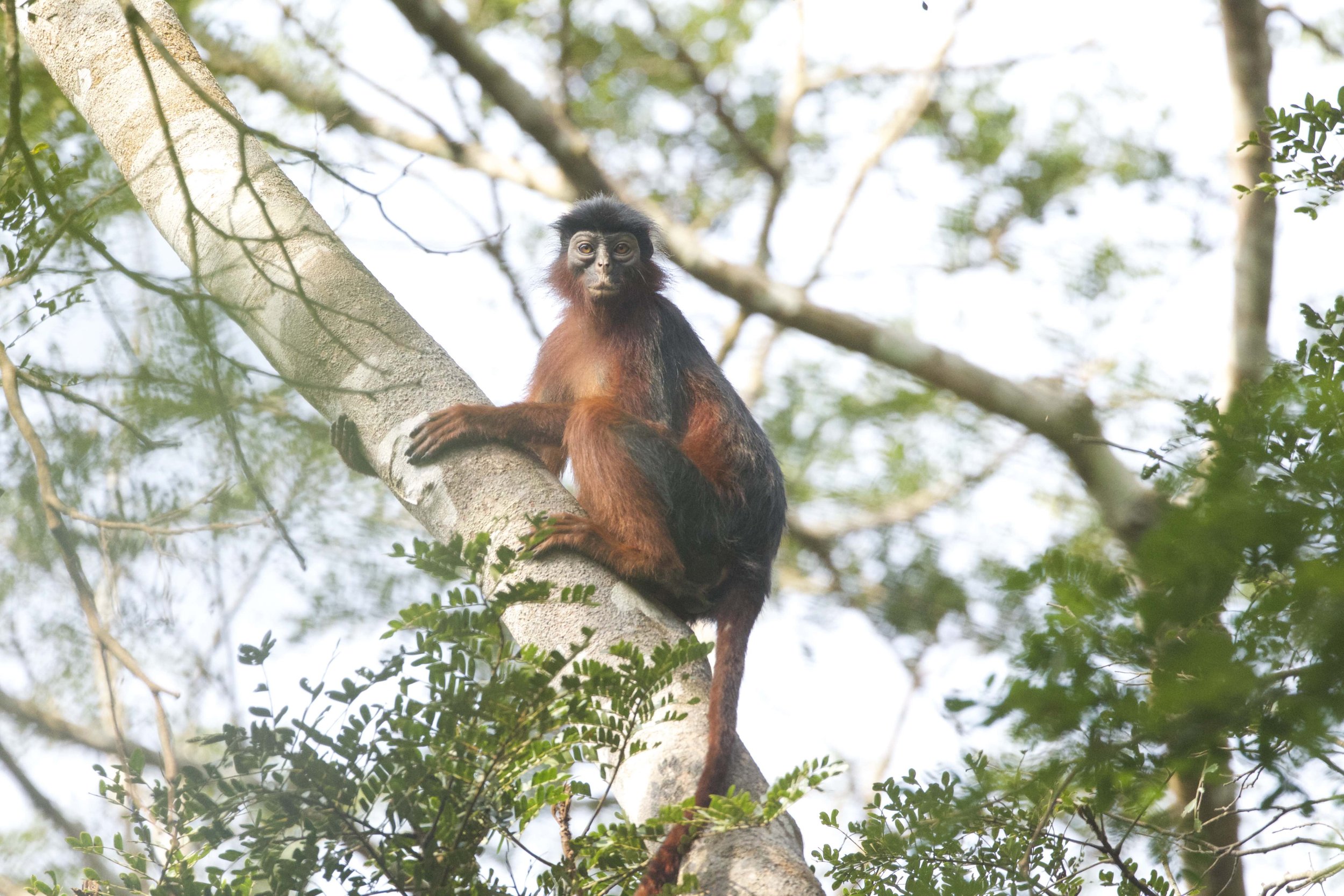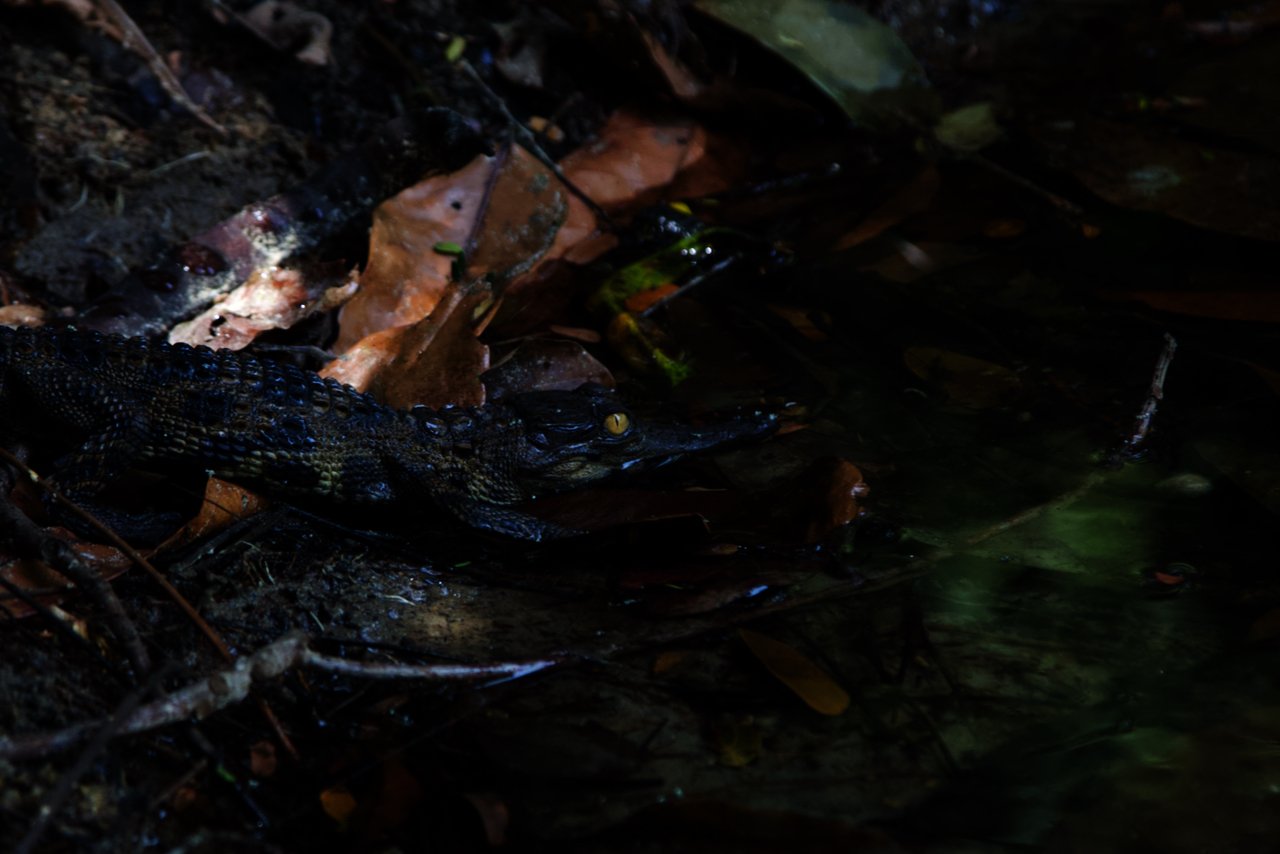Wildlife
BirdLIFe
The National Park is listed as an Important Bird Area and holds a high proportion of the threatened and endemic species of the Upper Guinean Forest region and a good representation of Guinea-Congolian forest biome species. Many of these species are also present in the community forests around the national park. Recent bird surveys recorded 294 species in the project zone bringing the total to 327, which is amongst the highest of the Upper Guinean Forests.
The birds that occur in the project zone include flagship species such as White-necked Picathartes, Rufous Fishing-Owl, White-breasted Guineafowl, Timneh Parrot and Gola Malimbe. Besides the high species diversity, several threatened species occur in good numbers. For example, the rainforest is home to some 7 different species of hornbill. This includes two Globally Threatened species: Brown-cheeked Hornbill (Vulnerable, forest-restricted) and Yellow-casqued Hornbill (Vulnerable). All are endemic to the Guinea forest biome of West Africa, and the larger hornbills are of particular conservation interest as they serve a major role in dispersing the seeds of large trees.
Primates
Gola is home to healthy populations of 12 species of rare and threatened primates. Ten of them (i.e. all except for two galagos) are endemic to the West African region; the Diana Monkey (Cercopitheus diana) and Western Pied Colobus (Colobus polykomos) are endemic to the Upper Guinea Forests. Several other species including Western red colobus (Piliocolobus badius) and Olive colobus (Procolobus verus) are not strictly endemic but most of their populations occur in the Upper Guinea Forests. Half of the twelve primate species in Gola are categorised as globally threatened on the IUCN Red List. Most are arboreal and live mainly in forests except for the Green monkey (Chlorocebus sabaeus) which is more associated with open savannah habitats and has been seen occasionally in riparian forests between Gola South and Tiwai Island.
The Critically Endangered Western Chimpanzee is relatively widespread throughout the national park and surrounding areas of community forest. The estimated total population of about 200 individuals compares favourably to other West African forests and has remained relatively stable over the last decade.
Other Mammals
The significance of the Gola Forests for biodiversity has been stressed many times. So far, 155 mammal species have been recorded in Gola including 19 globally threatened species and 24 species endemic to Upper Guinean Forests. Of the 49 species of large mammals known to occur, 9 species are currently considered to be threatened. This includes the Jentink’s and Zebra Duikers as well as the critically endangered African Forest Elephant. Leopard and Golden Cat footprints or signs have also been found during patrols in the National Park and occasionally have been captured by camera traps.
The endangered Pygmy Hippopotamus occurs in riverine areas, most notably along the Mano/Moro River and Mahoi River. There is very little information on the ecology of this species so it is hard to make inferences about likely population sizes. For more information about our pygmy hippo research, click here.
The national park is also home to three species of pangolin all of which have been listed as vulnerable due to the increase in pangolin trade from Africa to Asia. These are the White-bellied Pangolin, Black-bellied Pangolin and Giant Ground Pangolin. It is also an important stronghold for bats; 34 species have been identified so far, 2 of which are Vulnerable (Rhinolophus hillorum and Hipposideros marisae).
Amphibians
Survey work by Dr Annika Hillers identified a total of 43 amphibian species in the project zone. Most of the recorded frogs were typical forest species that are restricted to the Upper Guinea Forest zone. One third of the encountered amphibians are listed as threatened or near threatened on the IUCN Red List. Genetic analyses identified two specimens of the genus Phrynobatrachus as a cryptic species new to science. This species is probably endemic to the area and therefore is likely to be threatened based on its small distribution range.
The spectacular finding of the Critically Endangered forest Tai toad Amietophrynus taiensis, which so far was thought to be endemic to the Taï National Park in Côte d’Ivoire, further highlights the extremely high potential of the project zone for conservation.
Invertebrates
The importance of the project zone in the overall butterfly biodiversity of Sierra Leone can hardly be overestimated. Surveys have indicated that the project zone holds an extremely high diversity of butterflies, probably well in excess of 600 species or 80% of all the 750 species known from Sierra Leone. A significant proportion of the rarest and most interesting species in Sierra Leone are almost limited to the project zone, the great majority of which are forest-dependent. Four recent descriptions of species new to science are based, at least in part, on material collected in the project zone.
One hundred and forty species of dragonflies and damselflies (Odonata) are known to occur in the project zone, representing 80% of the species found in all of Sierra Leone. Odonata species can be used as indicators of the quality of freshwater ecosystems and forest habitats. This dependency can contribute to raising public awareness of the importance of conserving forests and aquatic habitats. Twenty-two species are considered regionally endemic or threatened, rare and insufficiently known (and thus potentially threatened). Six species found in the project zone in 2011 are new to science.
Freshwater Fish & reptiles
The rivers of Gola largely comprise the tributaries of the Moro, Mano, Mahoi and Moa Rivers within the Moro-Mano, Mahoi and Moa River basins. Sampling in the Mahoi and Koye rivers in March 2009 produced 31 fish species of which 35% are regional endemics confined to the Sierra Leone/Liberia Upper Guinean ecoregion. The distinctiveness of the fish communities is remarkable. Many of the fish species found are scarcely known to science and must be regarded as data deficient or unevaluated in IUCN conservation status terms. Of particular note are the headwater swamps and streams which have distinctive communities.
The waterways in Gola are also home to the Slender-nosed Crocodile (Mecistops cataphractus), an endangered species endemic to this region. It has been reported from time to time in the Moa and Morro rivers and the research team have also released a few individuals into the Mahoi River that runs through Gola South after they were confiscated from the exotic pet trade. There have also been sightings of the African dwarf crocodile (Osteolaemus tetraspis) from the Moa River between Tiwai Island and Gola South.









